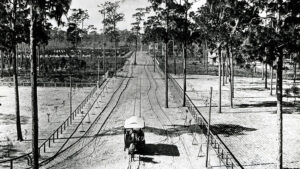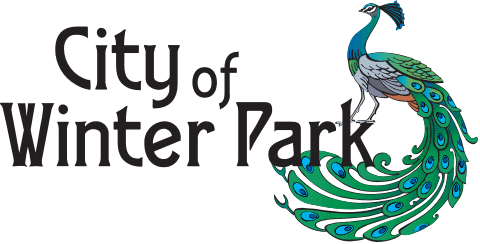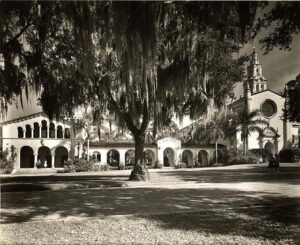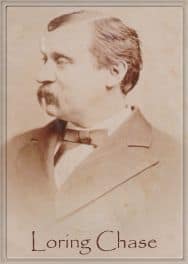 Winter Park is a city of over 30,000 residents located just north of Orlando in Orange County, Florida. One of Florida’s finest cities, it is famous for its stately trees, abundant parks, brick-lined streets, spectacular homes, museums, vibrant lakes and fine shops along Park Avenue.
Winter Park is a city of over 30,000 residents located just north of Orlando in Orange County, Florida. One of Florida’s finest cities, it is famous for its stately trees, abundant parks, brick-lined streets, spectacular homes, museums, vibrant lakes and fine shops along Park Avenue.- Chartered in 1887, the city was originally developed as a winter resort for wealthy Northerners seeking refuge from the harsh winters and a tranquil place to rest and relax. Fortunately, the city has maintained its natural beauty throughout the years.
- The city was originally named Lakeview in 1858 and re-named Osceola in 1870. Eleven years later, the name Winter Park was chosen by its founders. Loring Chase and Oliver Chapman, who during an informal discussion, decided they wanted the name to be something about a park in winter – thus the name Winter Park.
- Tourists came to the city originally to enjoy Winter Park’s beautiful lakes, warm temperatures and natural surroundings. Today they can enjoy these same amenities in addition to great restaurants, museums, entertainment, theater, outdoor activities, festivals and much more.
Rollins College, the oldest college in Florida and the nation’s premiere liberal arts college, was founded here in 1885 by New England Congregationalists who sought to bring their style of liberal arts education to Florida.
- A college that has produced Rhodes, Fulbright, Goldwater and Truman Scholars, as well as a Nobel laureate, Rollins has been praised by Time Magazine. It is consistently listed by U.S. News & World Report as one of “America’s Best Colleges”.
- The city’s most prominent features include its lakes, tree canopy, bricked streets, shopping district on Park Avenue. Rollins College and Central Park. Central Park is a large, open park featuring towering trees, friendly squirrels, and inviting park benches. The park was deeded to the city by one of its most influential early citizens – Charles Hosmer Morse. The city is also famous for the Winter Park Sidewalk Art Festival which draws over 250,000 visitors each year to Central Park to enjoy some of the best art and music in the United States.
 The Winter Park sinkhole, located west of Denning Drive and north of Fairbanks Avenue, nearly swallowed an entire city block-including automobiles and a house in 1981. The city has since stabilized the shore of the sinkhole and has added landscaping so that the area resembles a small lake.
The Winter Park sinkhole, located west of Denning Drive and north of Fairbanks Avenue, nearly swallowed an entire city block-including automobiles and a house in 1981. The city has since stabilized the shore of the sinkhole and has added landscaping so that the area resembles a small lake.- The City of Winter Park’s population is up from 22,339 in 1980, largely due to annexation. The city is 10-square miles in area, and its average elevation is 100 feet.
- Incorporated in 1925 from the Town of Winter Park to the City of Winter Park, Winter Park is governed by a Mayor and four City Commissioners, all elected at-large for three-year terms. Daily operation of the city is the responsibility of the City Manager. The City Manager is responsible for hiring and supervising a professional staff to carry out the directives and policies of the Mayor and City Commission.
- The municipal government in Winter Park employs approximately 500 full-time employees, who provide high quality services for it’s residents.
Winter Park Timeline
(As recorded by Claire Leavitt MacDowell in her book “Chronological History of Winter Park” and reprinted in “The Orlando Sentinel” – 6/29/1997, 7/6/1997)
- 1858
David Mizell Jr. and his family, the first settlers in what is now Winter Park, buy eight acres between Lakes Virginia, Mizell and Berry. The settlement that grows up around their homestead is called Lake View. - 1870
The name of Lake View is changed to Osceola, and a post office opens at the home of Col. E.B. Livingston, who also stocks groceries. The settlement remains well east of what is now downtown Winter Park. - 1875
Captain John K. Coiner operates what is said to be Orange County’s first sawmill on the present site of Rollins College. That same year, John Bigelow buys property on the south side of Lake Maitland, builds a large house and develops a citrus grove and extensive gardens. - 1876
Land in what is now Orwin Manor is being sold by the state for $1.85 an acre. - 1880
Track for the South Florida Railroad – the first in Orange County – is laid as far south as the present site of Winter Park by July or so. Service on the railroad between Sanford and Orlando begins Nov. 2. The resulting real estate boom sends land prices along the railroad as high as $300 an acre. 1881
Loring Chase sees the area for the first time in February and buys 600 acres for $13,000 in partnership with his Massachusetts boyhood friend, Oliver Chapman, who is visiting relatives in Sorrento.
By late summer, they plat a town, which includes a grid network of streets, a 10-acre park next to the railroad tracks, a lakeside resort hotel site and a black residential district for domestic servants and grove workers.- 1882
A railroad depot is built in March, and in September a road is constructed between Winter Park and the Osceola settlement. A post office is established at the Rogers House, a small inn, which was the second building in the young village.1883 – A telegraph office opens at the train depot on Jan. 1. The village’s first public school opens two weeks later in Town Hall. That April, President Chester Arthur visits at the invitation of a millionaire friend, Judge Lewis Lawrence, who had bought 10 acres on the south side of Lake Maitland in 1875. - 1883
A telegraph office opens at the train depot on Jan. 1. The village’s first public school opens two weeks later in Town Hall. That April, President Chester Arthur visits at the invitation of a millionaire friend, Judge Lewis Lawrence, who had bought 10 acres on the south side of Lake Maitland in 1875. 1885
The Florida Congregational Association in late April chooses Winter Park as the site of what will be Florida’s first four-year college, based on residents’ generous pledges of funds and land. The first term of Rollins College begins that November.- 1886
The Seminole Hotel opens on New Year’s night. It is a grand lakeside resort with gas lights, steam heat, and orchestra, formal dining room and long covered porches. The town’s first municipal election is held; two black men are among the six aldermen chosen. - 1887
Winter Park is incorporated as a town in October. Its corporate limits take in the Osceola settlement. Earlier that year, work begins on the Orlando and Winter Park Railroad, later often called the Dinky Line. - 1889
President Grover Cleveland visits Winter Park and stays at the Seminole Hotel. - 1890
President Benjamin Harrison and his wife also stay at the Seminole, coming to town on a private railroad car. (Two years later, Florida is the only state in which Harrison’s Republican presidential ticket does not appear on the ballot.) Knowles Public School opens in February. - 1891
The Henkel Block opens on Park Avenue with five stores, a boarding house and a doctor’s office. Fifteen street lamps, fueled by oil, are placed downtown. - 1893
Residents circulate a petition seeking to change the town limits, cutting out the predominantly black Hannibal Square area.
Influential residents led by William Comstock fail to persuade the Town Council but manage to get the Legislature to go along with the plan.
Much of the west side is de-annexed from the city until a new charter is adopted in 1925. - 1894
Sandspur, a weekly newspaper published by students at Rollins College, makes its debut. 1895
A policeman is hired to patrol groves within town limits to prevent the theft of fruit. He is paid $35 a month.- 1896
A clay road is built between Orlando and Winter Park. It is extended to Maitland the next year.
- 1900
Residents form a volunteer fire company. Six fire extinguishers are placed around town. 1901
An ordinance is passed to collect a tax on dogs in the amount of $1 for males and $2.50 for females. The money pays for extending the public school term by one month. Another ordinance prohibits the dumping of raw sewage into the town’s lakes.- 1903
Animals are doing a lot of damage, so five-day permits are issued to kill squirrels and destructive birds. Permission also is granted to kill alligators in the town’s lakes. Another ordinance levies a $25 fine and/or 25 days at hard labor for persons found guilty of playing games on Sunday. At the same time, the sale of intoxicating liquors is prohibited – except by a physician’s prescription. - 1904
A speed limit of 8 mph is mandated for motor vehicles. - 1905
The Travelers Insurance Company asks town officials to protect their property from damage by hogs running wild inside the town. A committee is appointed to look into the matter. It learns that state law authorizes towns with more than 500 residents to pass an ordinance that prohibits hogs running wild. As Winter Park has only 461 residents, it is powerless to stop the problem. (Such and ordinance successfully passes two years later after a petition drive.) Also that year, electric lights are installed in the Town Council chambers, school and Congregational Church. And, a snake-hunting party of college boys sees 40 snakes and kills 25, including a large cottonmouth. - 1906
The town sends the Atlantic Coast Line Railroad a bill for $3 to cover the cost of burying a cow that had been struck by a train. - 1907
Knowles Public School is replaced by a new building. Also that year, a new campus plan is adopted by the trustees of Rollins College.
New buildings are erected and others are moved to new locations the following year. - 1908
A boy is employed for $10 per month to keep cows off the streets during daylight hours. - 1909
A $3,000 bond issue for street improvements is made. - 1910
Hamilton Holt, who would later become a highly regarded president of Rollins College, lectures in Winter Park on “The Federation of the World.”
For more information about the history of Winter Park, check out the digitized archives on the Winter Park Public Library website.


 Rollins College, the oldest college in Florida and the nation’s premiere liberal arts college, was founded here in 1885 by New England Congregationalists who sought to bring their style of liberal arts education to Florida.
Rollins College, the oldest college in Florida and the nation’s premiere liberal arts college, was founded here in 1885 by New England Congregationalists who sought to bring their style of liberal arts education to Florida. 1881
1881 1885
1885 1895
1895 1901
1901